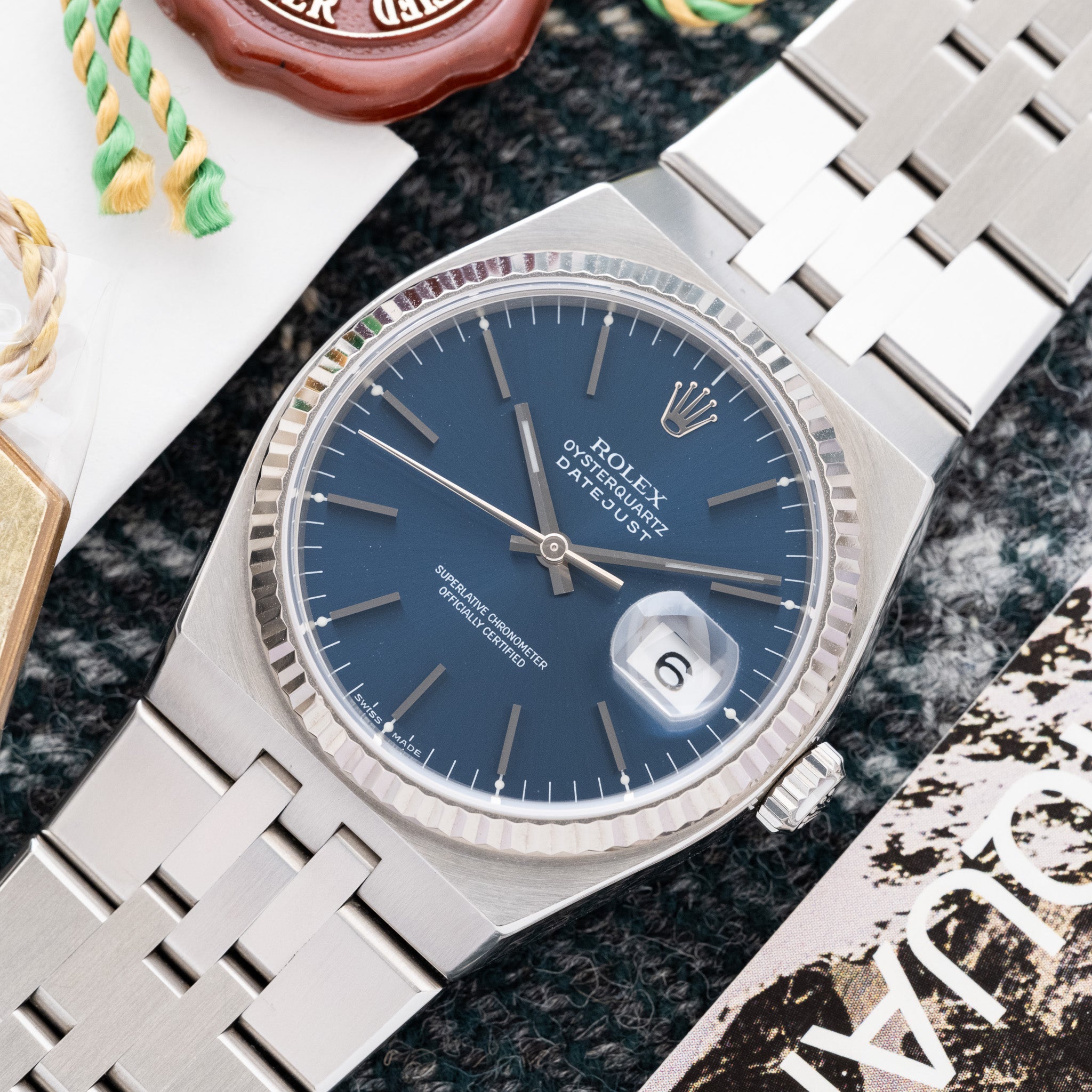
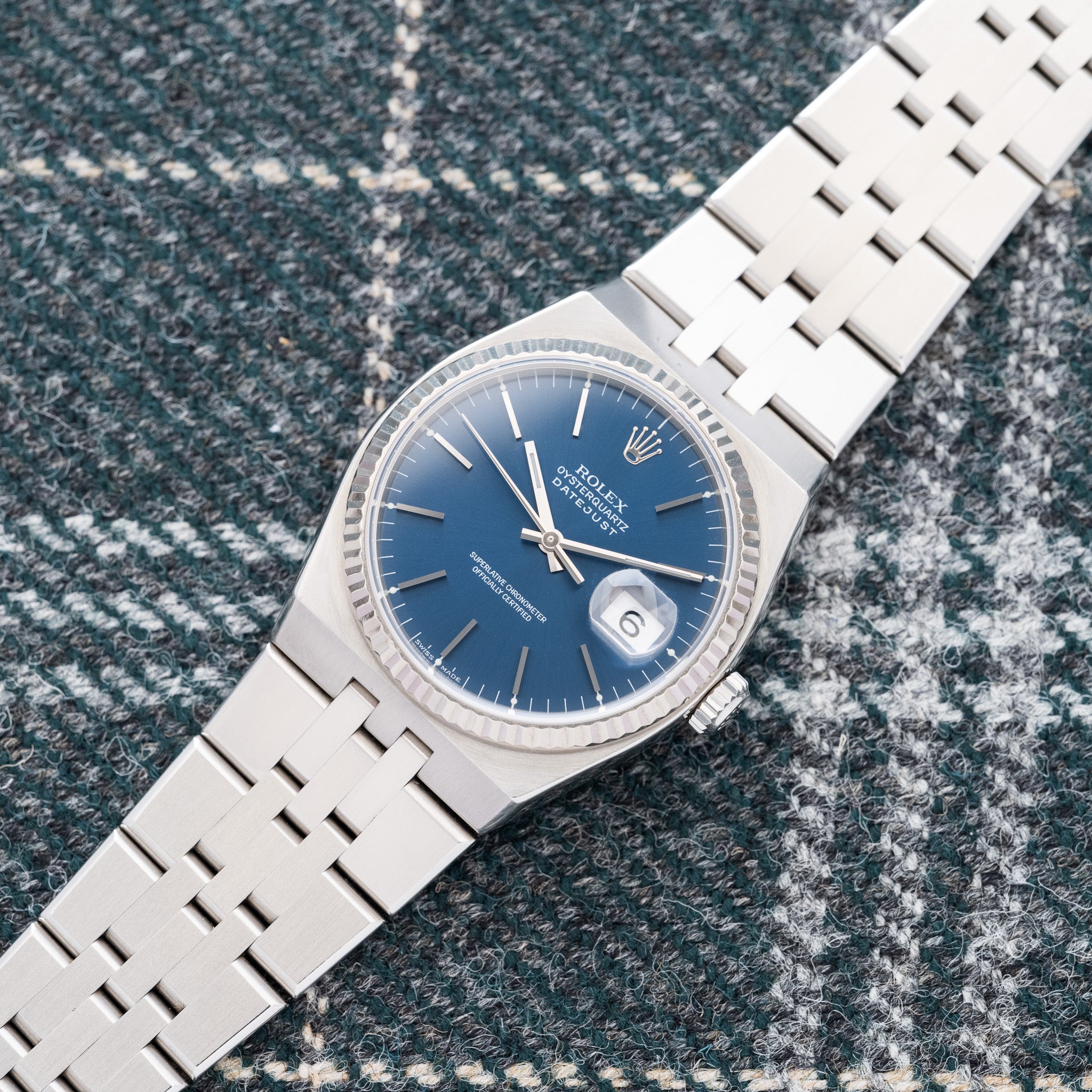
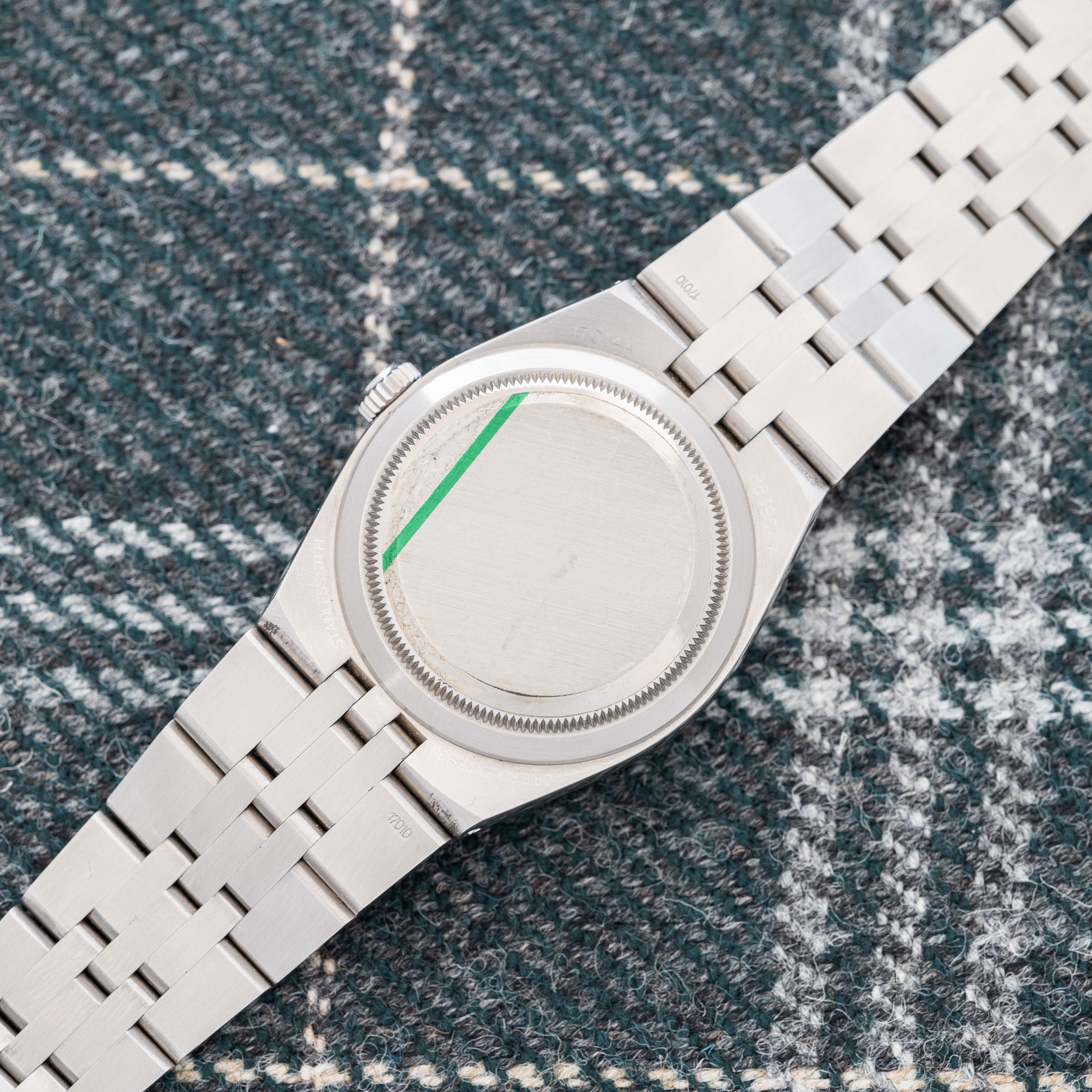
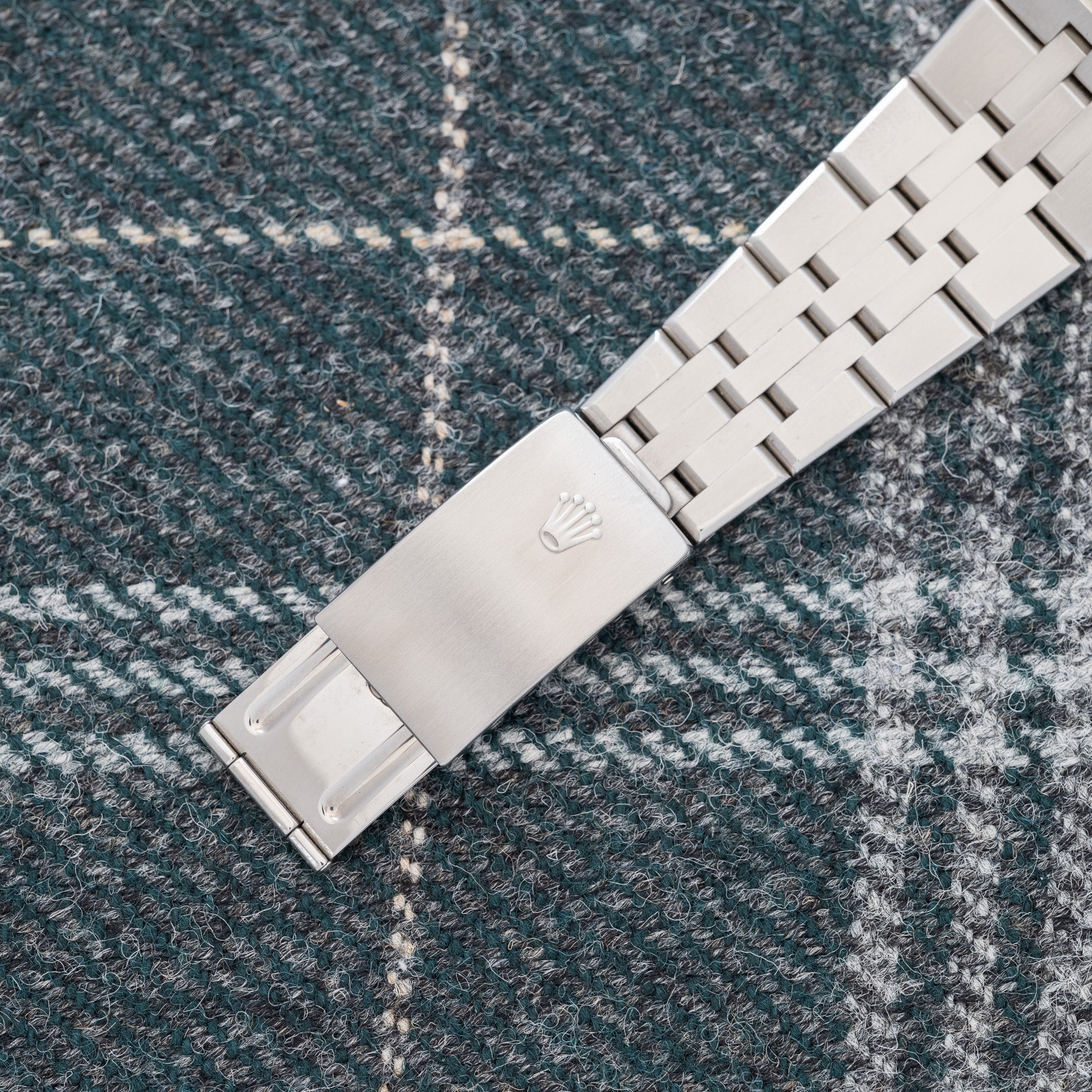
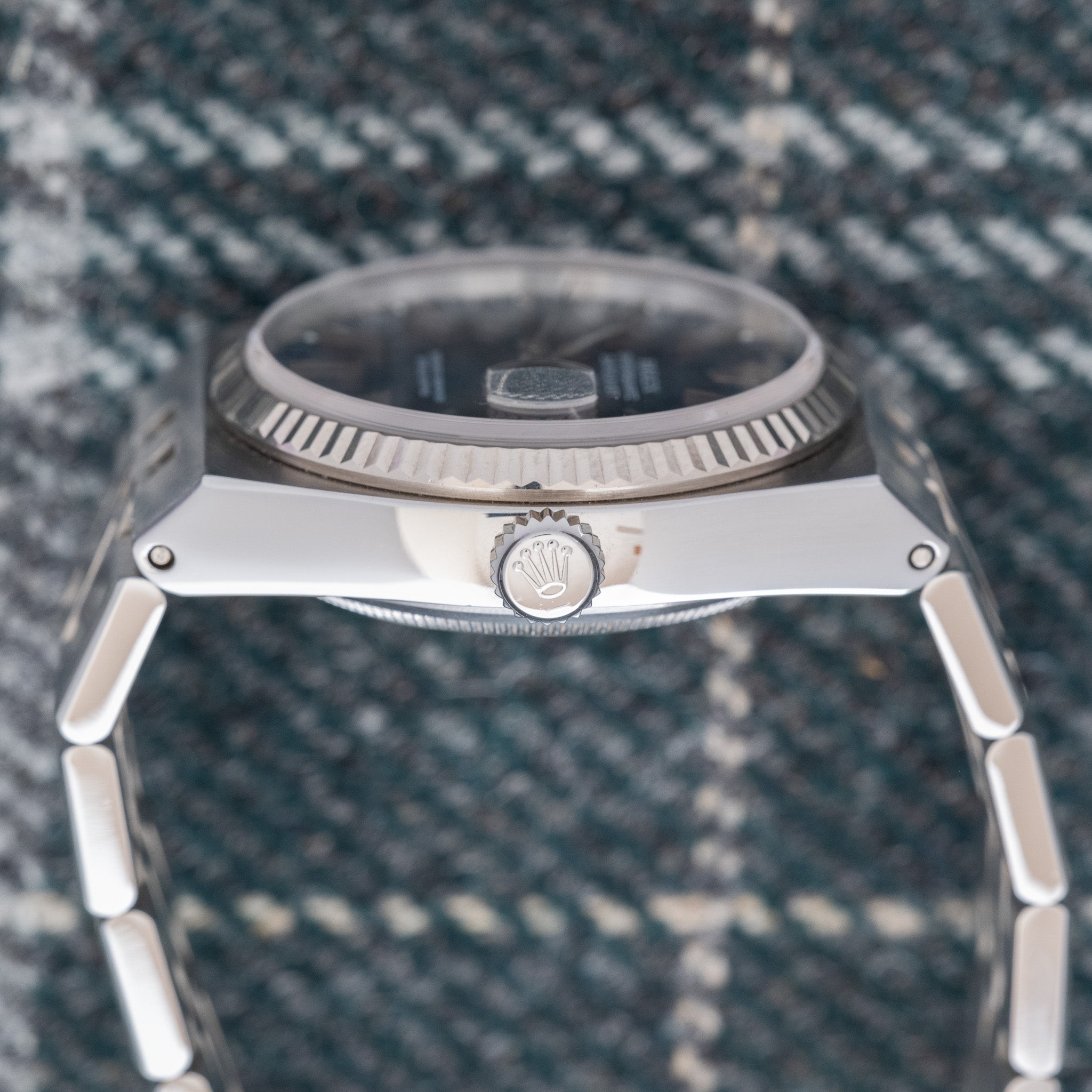
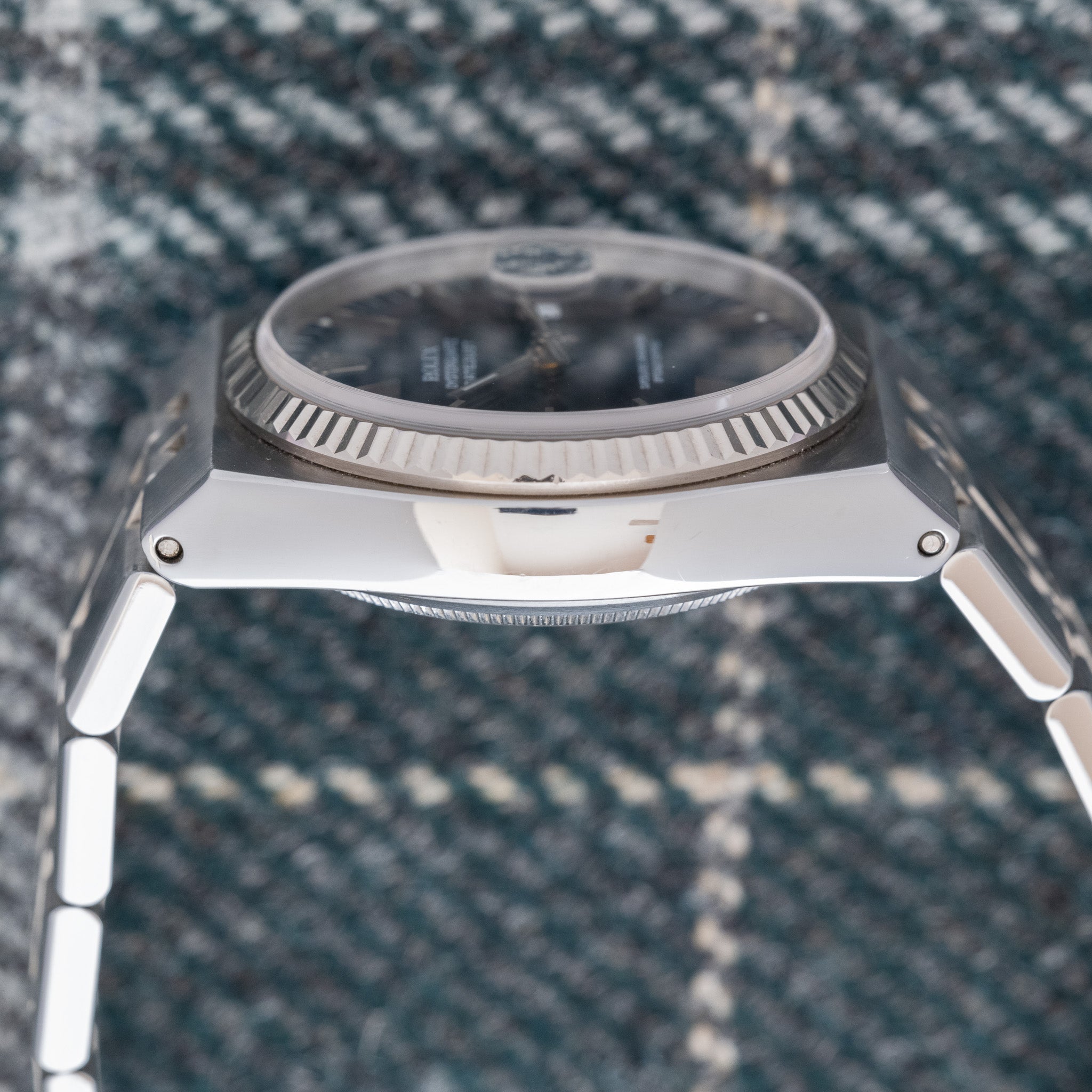
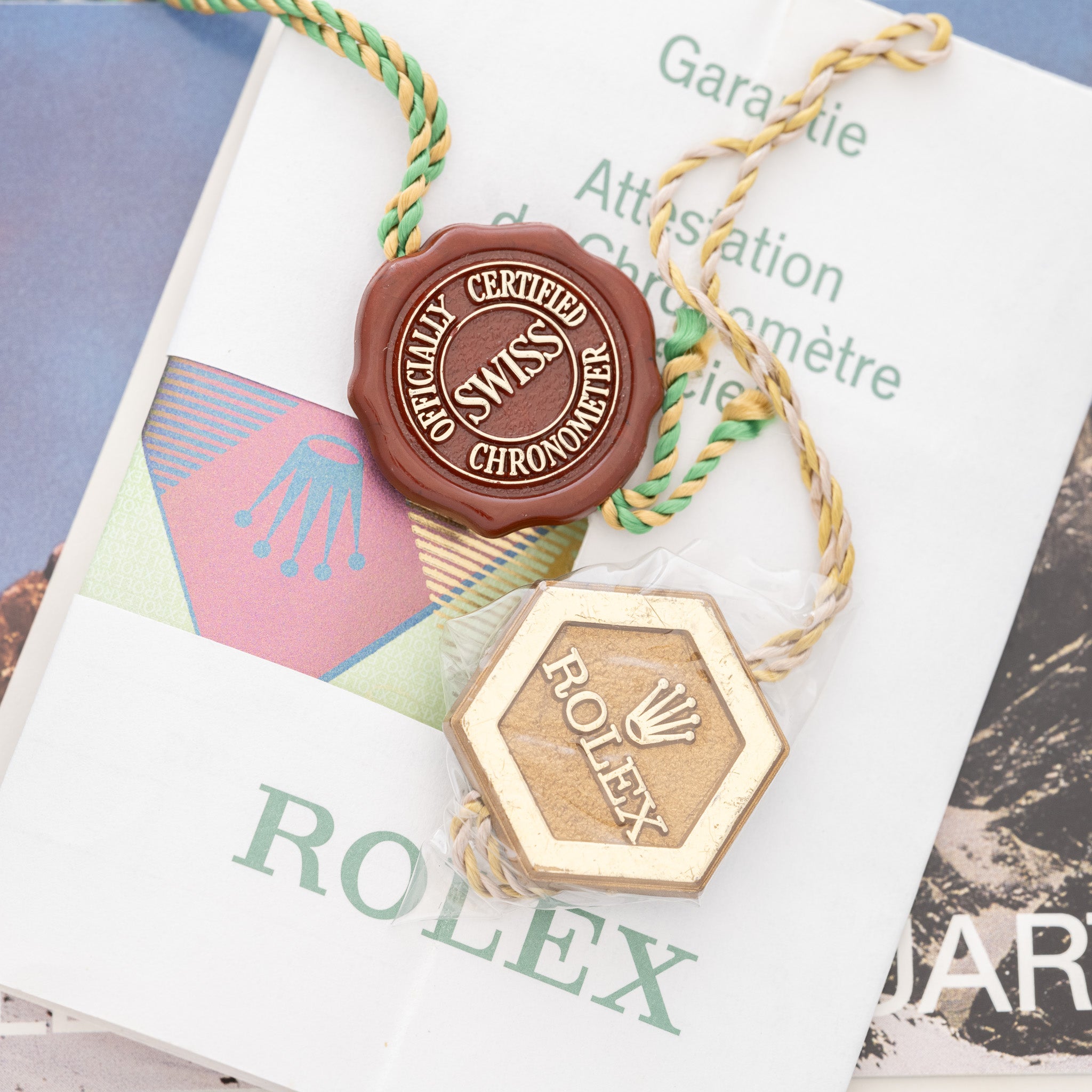
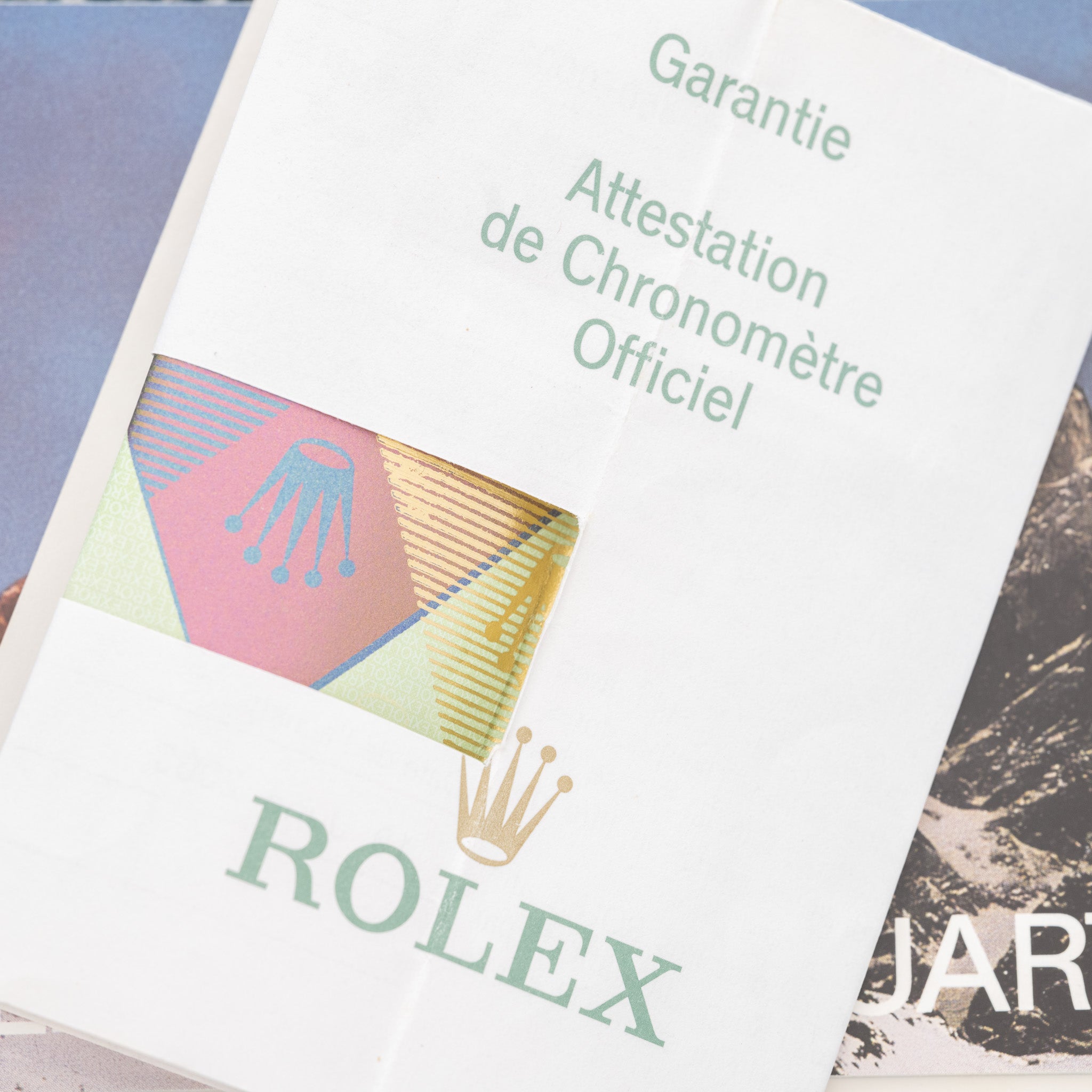
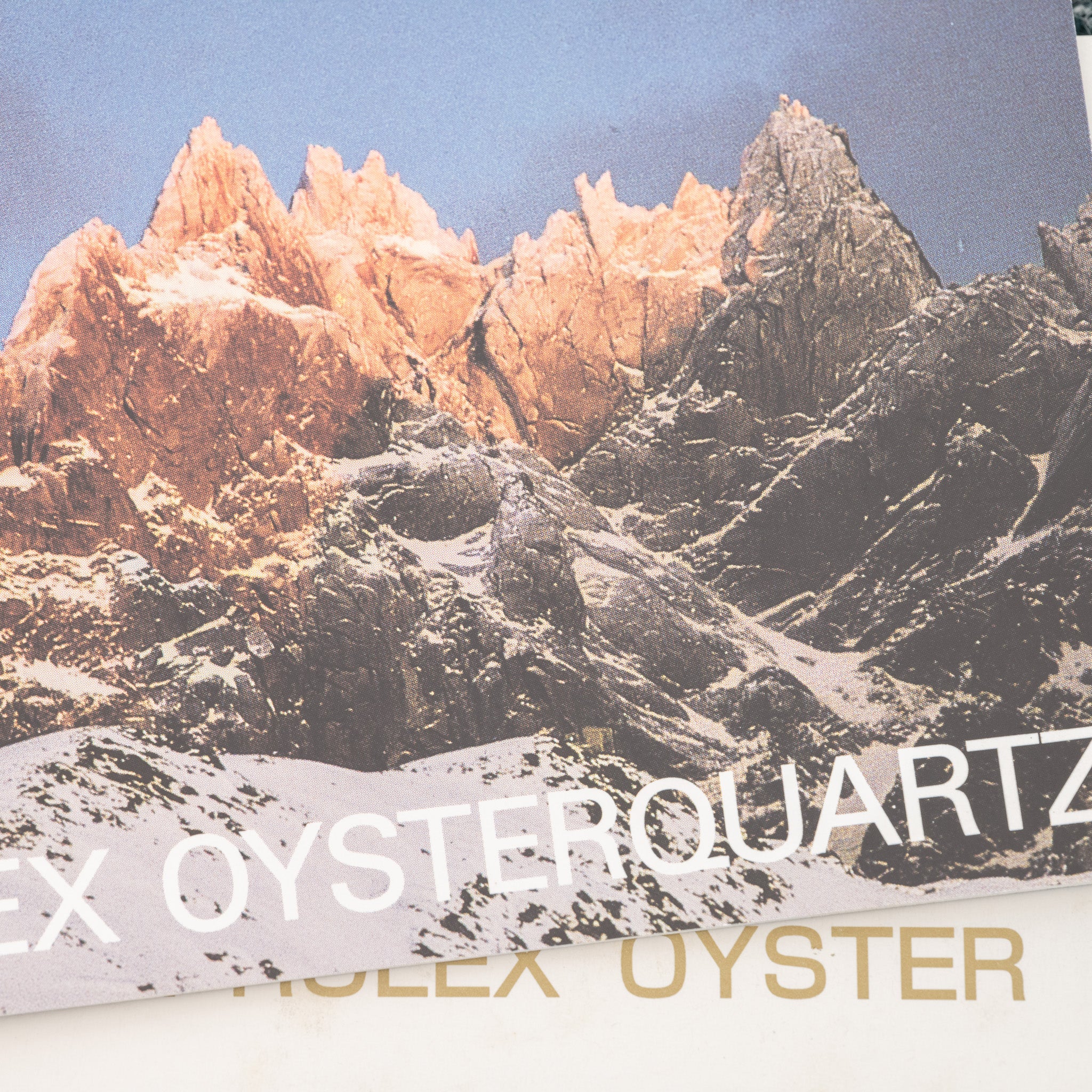
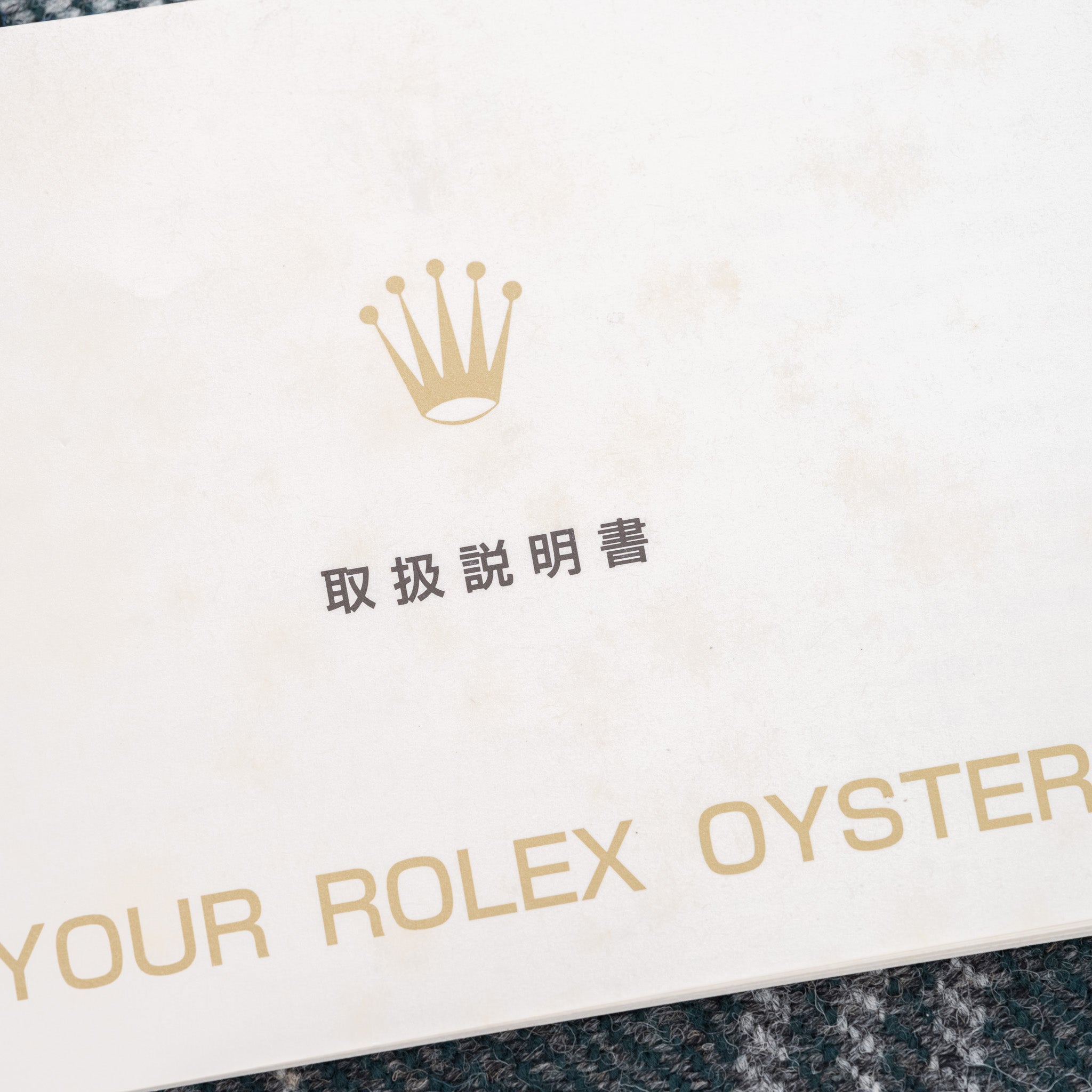
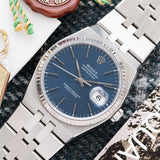
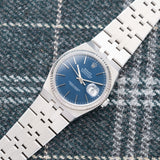
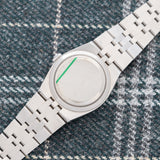
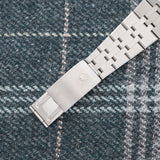
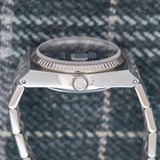

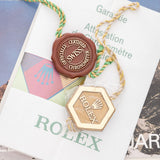
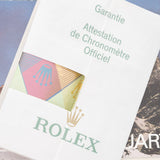
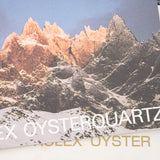
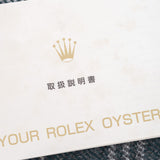
2001 Rolex Datejust Blue Dial Oysterquartz - Complete Set (Ref. 17014)
- Worth A Read
- Specifications
In 1970, Rolex introduced their first quartz watch, the reference 5100, which used the Beta 21 quartz movement, a Swiss quartz movement used by around 20 Swiss watch manufacturers. The reference 5100 was unique in its 39mm thick, angular case, featuring a Rolex fluted bezel and a three-link bracelet. It was the first Rolex watch to feature a sapphire crystal and was first produced in yellow gold but some white gold models were also released.
In 1972, Rolex left the Centre Electronic Horloger (CEH) and developed an in-house quartz movement. In 1977, two new quartz movements were introduced: the 5035 caliber for the Oysterquartz Datejust and the 5055 for the Oysterquartz Day-Date. These quartz movements had 11 jewels, a 32khz oscillator, a quick-set day and date function, and hacking seconds for accurate time setting. They were more accurate than any Rolex mechanical movement in production at the time.
Rolex produced their quartz watches for about 25 years, producing 25,000 watches. The two-tone Oysterquartz Datejust was the last quartz available to purchase until 2003 in some authorized retailers. The Oysterquartz Datejust can be found for around $4,000-$8,000, while the precious metals of the Oysterquartz Day-Date command a higher pre-owned price point. The gem-set versions or day-date models with pyramid-style bezel and links are even rarer and command an even higher price point.
Reference: 17014
Model: Datejust
Movement: Quartz
Contents: Complete set with the original Oysterquartz hangtag and booklet. The papers have been cut out where the original owner's information was.
Case: The case is 36mm. The case does show signs of a polish, but it is still in very nice condition.
Dial: The dial is a very late blue dial with original Superluminova lume. The sunburst blue finish is in great shape.
Strap & Buckle: The Bracelet is in great condition.
2001 Rolex Datejust Blue Dial Oysterquartz - Complete Set (Ref. 17014)
Authenticity Guaranteed
All our watches are carefully inspected to insure and guarantee the authenticity.
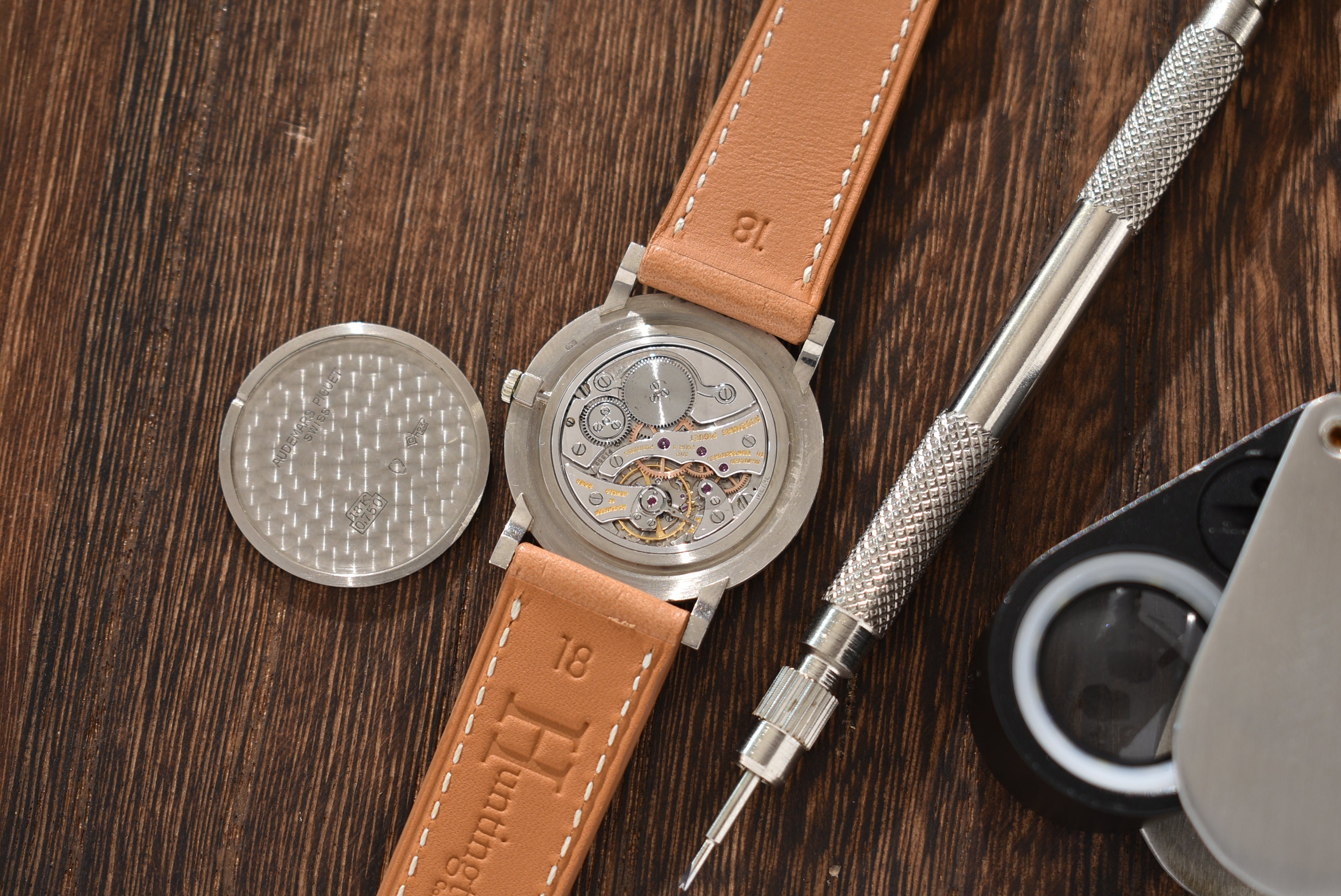
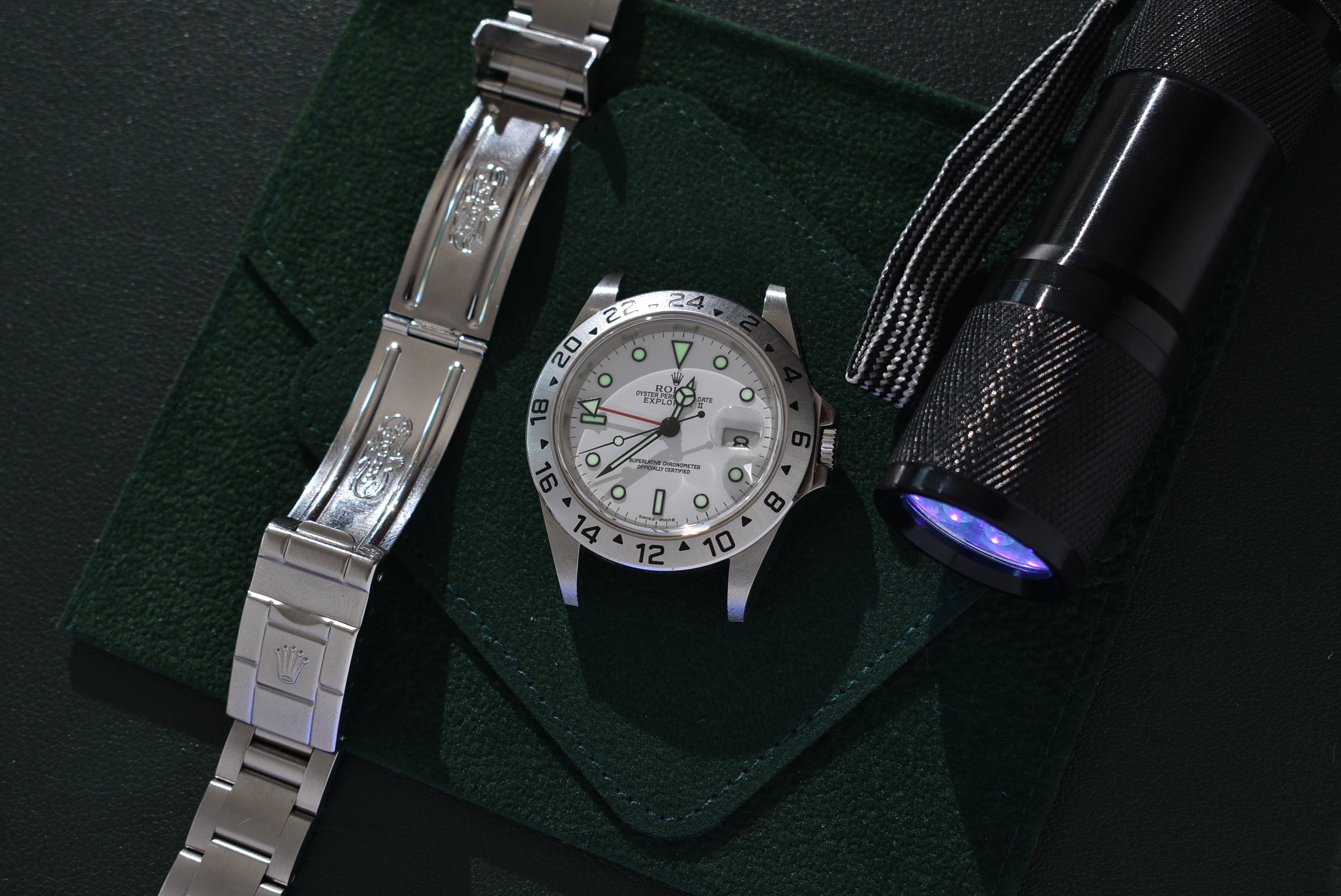
The Details
All our watches are scrutinized during inspection to make sure our descriptions are as accurate as possible.
- Related products
- Recently viewed
Cart
No more products available for purchase
Your Cart is Empty
Pair with
- Worth A Read
- Specifications
In 1970, Rolex introduced their first quartz watch, the reference 5100, which used the Beta 21 quartz movement, a Swiss quartz movement used by around 20 Swiss watch manufacturers. The reference 5100 was unique in its 39mm thick, angular case, featuring a Rolex fluted bezel and a three-link bracelet. It was the first Rolex watch to feature a sapphire crystal and was first produced in yellow gold but some white gold models were also released.
In 1972, Rolex left the Centre Electronic Horloger (CEH) and developed an in-house quartz movement. In 1977, two new quartz movements were introduced: the 5035 caliber for the Oysterquartz Datejust and the 5055 for the Oysterquartz Day-Date. These quartz movements had 11 jewels, a 32khz oscillator, a quick-set day and date function, and hacking seconds for accurate time setting. They were more accurate than any Rolex mechanical movement in production at the time.
Rolex produced their quartz watches for about 25 years, producing 25,000 watches. The two-tone Oysterquartz Datejust was the last quartz available to purchase until 2003 in some authorized retailers. The Oysterquartz Datejust can be found for around $4,000-$8,000, while the precious metals of the Oysterquartz Day-Date command a higher pre-owned price point. The gem-set versions or day-date models with pyramid-style bezel and links are even rarer and command an even higher price point.
Reference: 17014
Model: Datejust
Movement: Quartz
Contents: Complete set with the original Oysterquartz hangtag and booklet. The papers have been cut out where the original owner's information was.
Case: The case is 36mm. The case does show signs of a polish, but it is still in very nice condition.
Dial: The dial is a very late blue dial with original Superluminova lume. The sunburst blue finish is in great shape.
Strap & Buckle: The Bracelet is in great condition.
